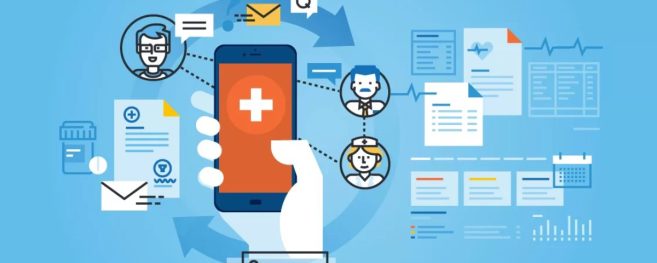HIPAA-Compliant Texting a Convenient, Efficient Way to Improve Patient Management and Outcomes

Last month, we published a blog, “Using Automated Phone Calls and Texts to Improve Patient Outcomes, Hospital Brand Perceptions” that examined some advantages how telephones—including mobile phones and smartphones—can enhance patient management and communications.
We also demonstrated the importance of using mobile device communications to engage with patients—in particular, via text messaging—after sharing research that stated approximately two-thirds of American adults own a smartphone, with 62 percent of them having used the device to get information about a health condition.
As with so many other matters that relate to patient information, privacy—especially with respect to HIPAA compliance—is of supreme importance. Therefore, to fully appreciate the advantages of using text messages to communicate with patients, it’s crucial that patient text messages are HIPAA compliant.
Ensuring HIPAA-Compliant Text Messages
Ensuring that text messages comply with HIPAA privacy laws is fairly simple: You are essentially in compliance if your messages don’t include any information that identifies the patient (including his/her conditions or treatments). For example, you may send text-message appointment reminders and confirmations, but only if you don’t include the patient’s name, birth date or any similar information.
It’s important to note text messages don’t need to be entirely stripped of practical healthcare information to be HIPAA-compliant. For instance, text messages that encourage patients to remain an active participant in their healthcare fit within this concept—so long as they don’t recommend specific tests for the patient or explicitly indicate the patient has a specific condition.
Advantages of HIPAA-Compliant Text Messaging with Patients
• More Convenient for Patients
Many people who have a smartphone use it as more of a mobile office than as a mobile telephone. In some cases, they don’t even answer the phone. Instead, they prefer to use text messaging, e-mail and other messaging platforms. By communication through channels that patients may find more convenient, you might find that you’ll have more success contacting them via text than you might through phone calls.
• Increase Engagement with Patients
Smartphone users interact with their devices an estimated 2,617 times per day—which includes the times they check for messages, social media and missed phone calls. With such a high volume of daily interactions, HIPAA-compliant texting can help healthcare providers increase engagement with patients—but without having to place time-consuming phone calls that might just go to voicemail.
• Improves Outcomes
Research is routinely finding that text messages can improve patient outcomes. For instance (and as I recently mentioned in an article published by Digital Commerce 360.com, “Automated Texting Can Improve Patient Management and Outcomes”), a study published in the Journal of Medical Internet Research noted patients who received text messages as part of a study related to Type 2 diabetes had improved outcomes.
• Optimizes Staff Resources
Using platform-as-a-service (PaaS) patient management solutions that can send automated messages may free up your staff members’ time that would have otherwise been spent making phone calls to patients. This enables them to more quickly answer inbound calls from patients, which can result in a more productive and positive experience for patients.
Gopi Yeleswarapu is Sequence Health’s Chief Technology Officer.
Sequence Health is a recognized leader for innovative patient engagement solutions—which includes its Platform as a Service (PaaS), Sequence. To learn more about how Sequence can help you take advantage of HIPAA-compliant texting and other automated patient engagement solutions, please contact us.





